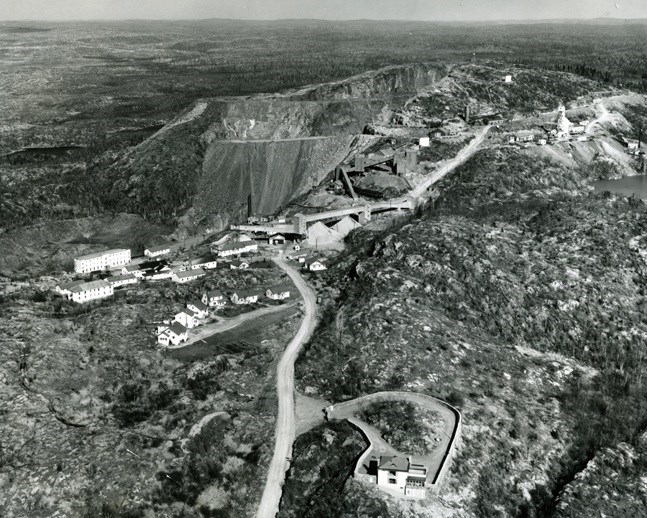From the Sault Ste. Marie Public Library archives:
*************************
Remember This? The Helen Mine started it all
At the end of the 19th century, local prospectors Benjamin Boyer, Jim Sayers and Alois Goetz found what they thought was gold while searching for minerals in the Algoma area.
The men took their sample to Francis H. Clergue who recognized the mineral as iron ore, not gold.
The three men offered the land to Clergue for $500.
Upon purchase Clergue created the Helen Mine which he named after his sister.
Mining began at the new Helen Mine and on July 1, 1900 the Canadian Blast Furnace Company (of Midland, Ontario) purchased and processed the first iron ore.
The payroll at that time was just $107,535 for almost 400 employees.
In 1902 a steel plant, later to be known as Algoma Steel, was built 220 kilometres south of the Helen Mine, located on the St. Marys River.
Four steamships were purchased to ship the ore to Sault Ste. Marie via the Michipicoten Harbour.
These vessels would eventually become part of the Algoma Central Steamship Lines.
A railway from the mine to Lake Superior was also built and became the Algoma Central Railway.
The mine was successful until 1918 when the hematite ore deposits depleted.
It was at this time that the mine, once Canada’s largest producer of ore, closed.
By the time of its closure, the Helen Mine had produced almost 3 million tons of hematite ore worth more than 8 million dollars.
The mine remained vacant until 1921 when a fire destroyed most of the mine.
Geological surveys taken after World War One indicated that other types of ore were still present in the former mine.
In 1935, Sir James Dunn, President of Algoma Steel Corporation, recommended that the Helen Mine be rebuilt.
Dunn appointed Charles D. Keading as Engineer in Charge and A.A. Richardson as Construction Engineer.
The Algoma Steel Corporation which owned Algoma Ore Properties operated the mine and 210 people were employed to extract the estimated 8 million tons of iron ore.
In 1937 Dunn said, in an interview with the Sault Star, “that half the charges at the furnaces of the Algoma Steel Corporation (are) of Helen Mine ore.”
In another Sault Star interview Dunn gave credit to then Ontario Premier Mitchell F. Hepburn.
Dunn approached his friend Hepburn and asked him to increase mining subsidies.
He said “without Hepburn’s assistance in providing a short-cut to reorganization of the company, the matter might still be in the courts …and without the bounty placed on iron ore, the Helen Mine would not be in the process of development.”
The Second World War began shortly thereafter which significantly increased the demand for metals.
By the late 1940s, the open pit had become so large that a decision was made to change to underground shafts to make it a safer operation for the employees.
In 1945, in order to keep closer tabs on his mine, Dunn built a large home at the top of the Helen Mine Mountain.
The house was called the Eagle’s Nest. By 1950 the Helen Mine had grown to 700 employees.
In 1998, the last of the ore was mined from the Helen Mine and Algoma Ore closed its doors.
*************************
Each week, the Sault Ste. Marie Public Library and its Archives provides SooToday readers with a glimpse of the city’s past.
Find out more of what the Public Library has to offer at www.ssmpl.ca and look for more Remember This? columns here.
